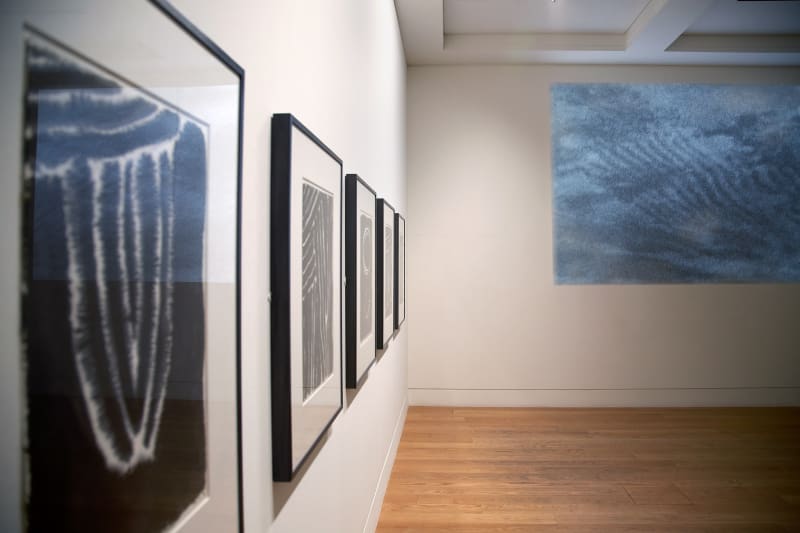RSA Finlay Room
Free entry
Based on a walk across the moorland of Staffin with the poet Myles Campbell, from his home to the craggy peaks and hidden lochans of the Quirang, on the far north east of the Isle of Skye, Translating the Peat, with its meditation on the sense of place and history of the poet’s family peat cuts, chimes with Whiteford’s own interest in the hidden marks made by human hand on the land.
The films and accompanying watercolours in New Film Works from the Hebrides, continue Whiteford’s interest in the ‘hand-drawn’ topography of the land. Over the past twenty years she has transformed the reading of landscape through her work in the Gallery and on the land itself, often drawing directly on to the ground to interrogate meaning and explore cultural layers which have been obscured over time. Rooted in the Hebrides, these new works in film and watercolour comment on a terrain with which people have interacted for centuries – landscapes that bear the scars of both natural and human intervention. These are areas which resonate historically but which nature has gradually reclaimed.
A’Mhointeach/ The Moor was filmed in Super 8 on the Isle of Lewis. Flying over the island in a light aircraft, it shows images of the land and sea below, layered with the sound of the wind and the droning noise of the engine, overlaid with fragments of spoken and sung Gaelic. It originated when working on an earlier project, An Leabhar Mor (The Great Book of Gaelic). Whiteford chose to work with the poem Chunnaic mi uam a Bheinn / I Saw at a Distance the Hill by the Lewis poet Murdo Macfarlane (1901 – 1982).
Chunnaic mi uam a Bheinn / I Saw at a Distance the Hill describes the experience of flying back into Stornoway after many years in exile, and the narrative that this landscape provokes for the poet. It is a meditation on time, memory and mortality and, like much Gaelic poetry, it has a profound sense of place.
I wanted to see this place for myself. From the air it is possible to see many of the ancient runrigs – cultivation systems carved out of the thin earth, even on rocky headlands. Many of these are only visible after a light fall of snow or in the early evening when the sun is low and the light casts long shadows. Over Broad Bay, the plane would pass over the headland at East Roisnish, which looks as if it had been sculpted from the rock. I recognised this extraordinary site from an archive photograph I had seen in National Monuments Record in Edinburgh. At ground level and it was equally dramatic, with the runrigs shoulder high.
The landscape of the Lewis looks like an artist’s drawing covered with lines and marks and hidden images. These are the scarifications made on the skin of the earth over generations, the modern peat cuts as well as the ancient runrigs which criss-cross the island – a palimpsest of human interaction with the land.
Kate Whiteford RSA
This film was first shown at An Lanntair, Stornoway in 2007.
A new publication by Kate will be available during the exhibition.


